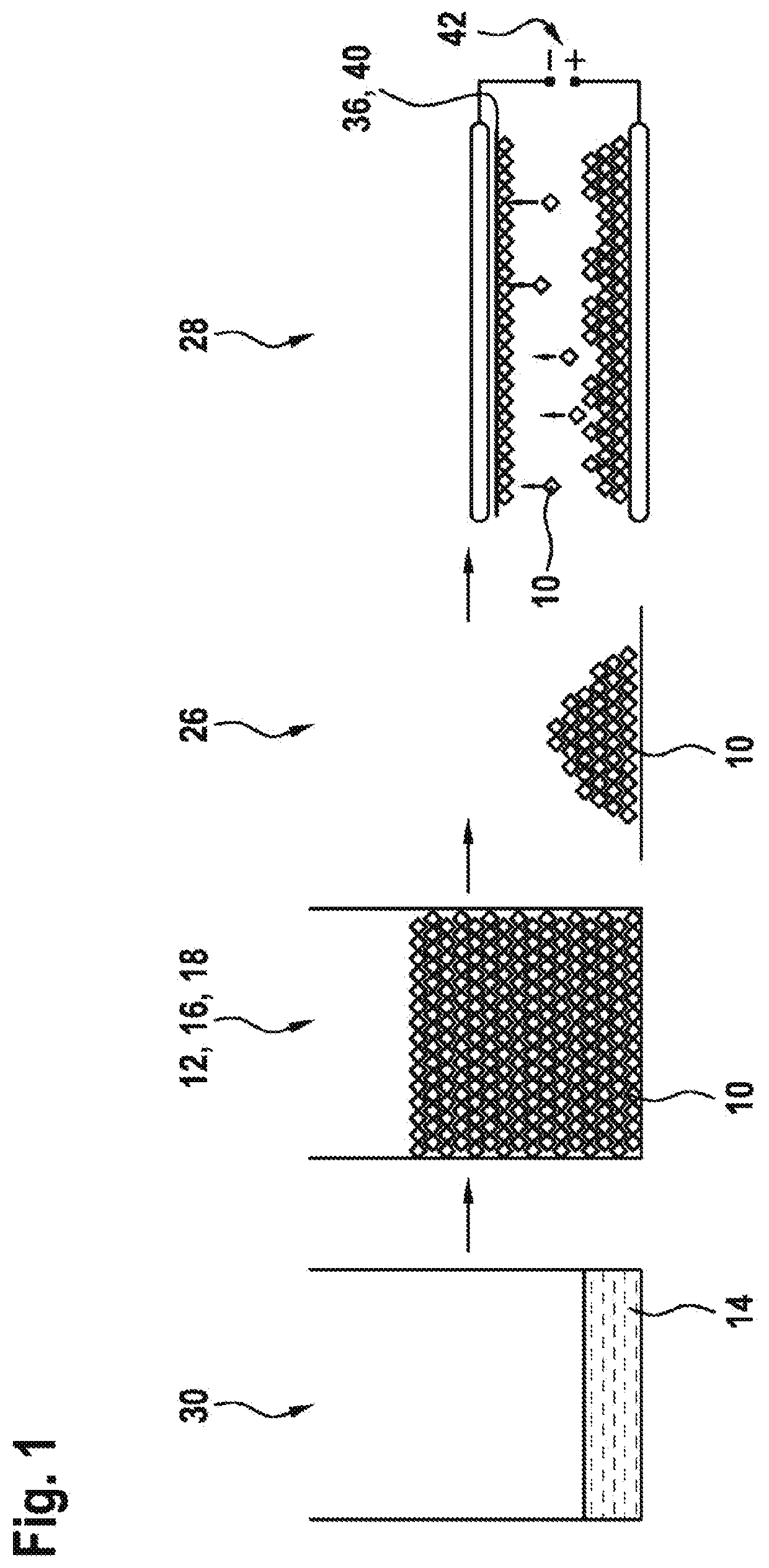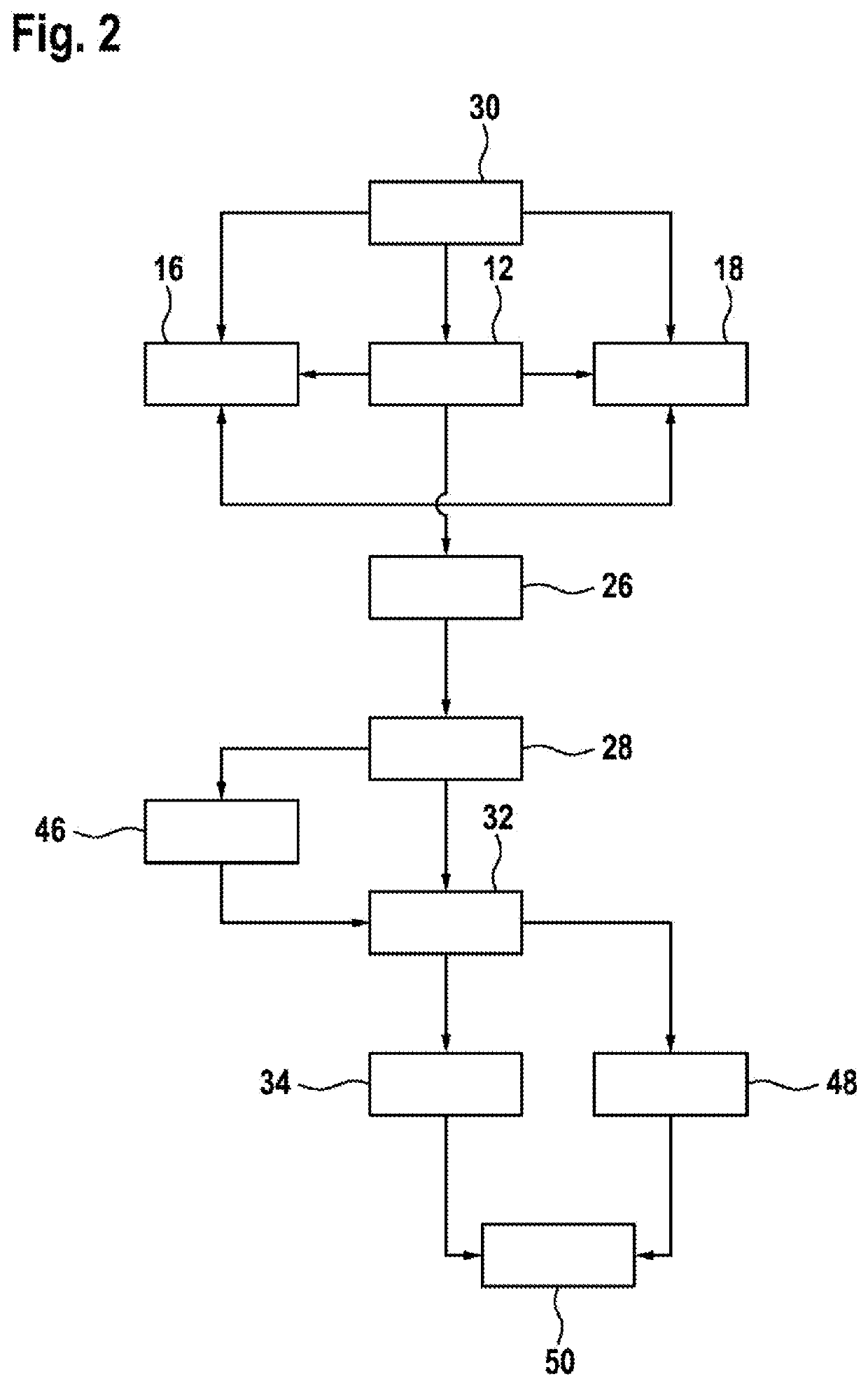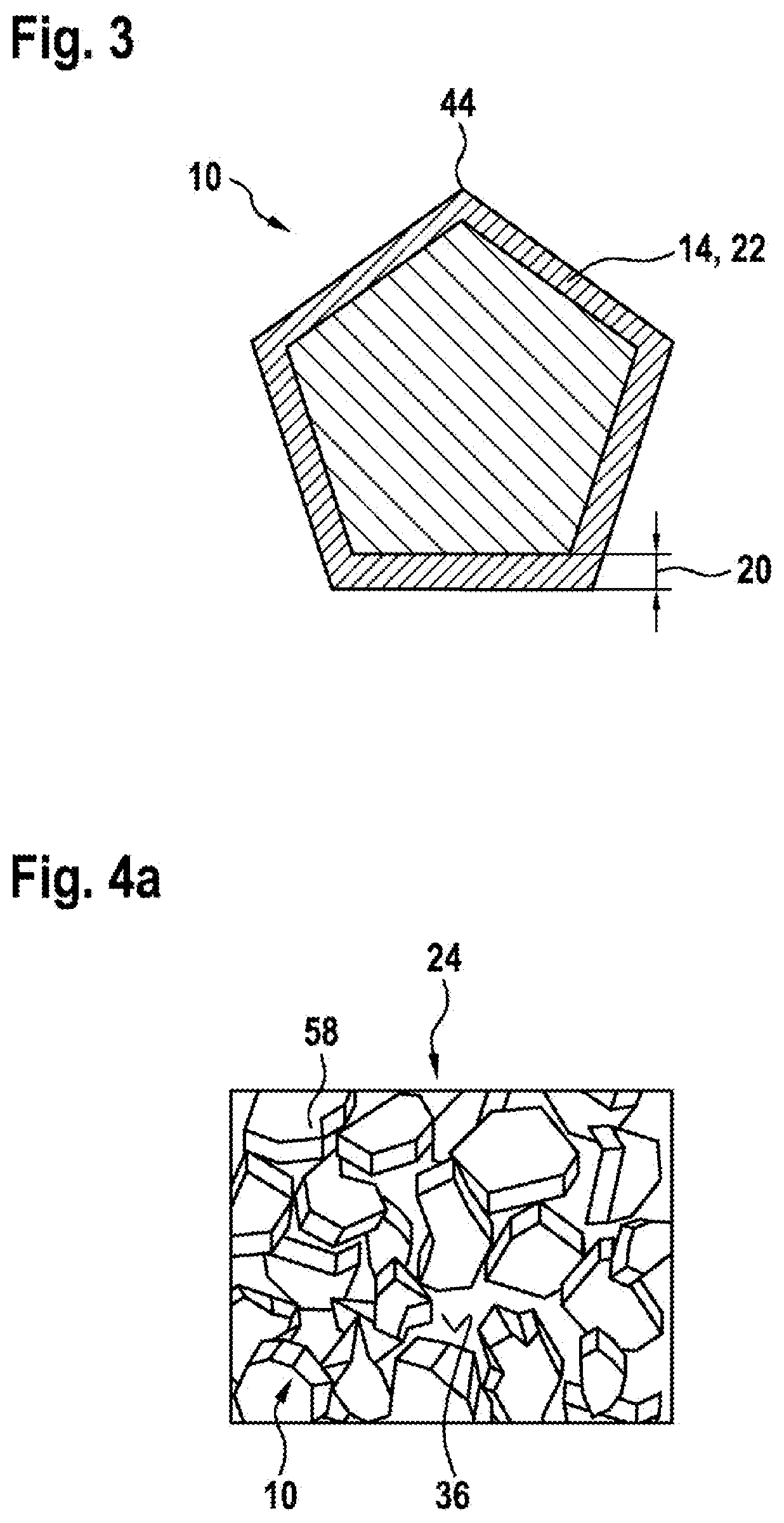Method for Electrostatically Scattering an Abrasive Grain
a technology of electrostatic scattering and abrasive grains, which is applied in the direction of non-metal conductors, conductors, manufacturing tools, etc., can solve the problems of non-electrically conductive abrasive grains such as diamonds or very coarse abrasive grains that are not electrostatically scatterable, and achieve good grainfall behavior, low consumption and/or demand for coating materials, and increase in the mass of abrasive grains with a coating
- Summary
- Abstract
- Description
- Claims
- Application Information
AI Technical Summary
Benefits of technology
Problems solved by technology
Method used
Image
Examples
Embodiment Construction
[0028]FIG. 1 shows a schematic process of the method for the electrostatic scattering of an abrasive grain 10. In at least one process step 30, an electrically conductive material 14 is provided. The electrically conductive material 14 is in the form of an organic compound. The electrically conductive material 14 may in particular at least partly contain other liquids and / or may be diluted with water.
[0029]In at least one process step 12, 16, 18, the electrically conductive material 14 is applied to the abrasive grain 10.
[0030]In at least one process step 16, the electrically conductive material 14 is in the form of an ionic liquid. In at least one process step 16, the ionic liquid in the form of an organic compound is applied to the abrasive grain 10.
[0031]In at least one process step 18, the electrically conductive material 14 is in the form of an intrinsically conductive polymer. In at least one process step 18, the intrinsically conductive polymer in the form of an organic compo...
PUM
 Login to View More
Login to View More Abstract
Description
Claims
Application Information
 Login to View More
Login to View More - R&D
- Intellectual Property
- Life Sciences
- Materials
- Tech Scout
- Unparalleled Data Quality
- Higher Quality Content
- 60% Fewer Hallucinations
Browse by: Latest US Patents, China's latest patents, Technical Efficacy Thesaurus, Application Domain, Technology Topic, Popular Technical Reports.
© 2025 PatSnap. All rights reserved.Legal|Privacy policy|Modern Slavery Act Transparency Statement|Sitemap|About US| Contact US: help@patsnap.com



